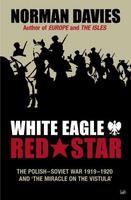Subject

photo credits: Wikimedia Commons
The Polish–Soviet War (late autumn 1918 / 14 February 1919 – 18 March 1921) was fought primarily between the Second Polish Republic and the Russian Soviet Federative Socialist Republic before it became a union republic in the aftermath of World War I and the Russian Revolution, on territories which were previously held by the Russian Empire and the Habsburg Monarchy following the Partitions of Poland. On 13 November 1918, after the collapse of the Central Powers and the Armistice of 11 November 1918, Vladimir Lenin's Russian Soviet Federative Socialist Republic annulled the Treaty of Brest-Litovsk (which it had signed with the Central Powers in March 1918) and started moving forces in the western direction to recover and secure the Ober Ost regions vacated by the German forces that the Russian state had lost under the treaty. Lenin saw the newly independent Poland (formed in October–November 1918) as the bridge which his Red Army would have to cross to assist other communist movements and to bring about more European revolutions.At the same time, leading Polish politicians of different orientations pursued the general expectation of restoring the country's pre-1772 borders. Motivated by this idea, Polish Chief of State Józef Piłsudski (in office from 14 November 1918) began moving troops east. In 1919, while the Soviet Red Army was still preoccupied with the Russian Civil War of 1917–1922, the Polish Army moved into territories regarded by many Poles as Polish "Kresy". That year, they took most of present-day Lithuania and Belarus. By July 1919, Polish forces had taken control of much of Eastern Galicia and had emerged victorious from the Polish–Ukrainian War of November 1918 to July 1919. In the eastern part of Ukraine bordering on Russia, Symon Petliura tried to defend the Ukrainian People's Republic, but as the Bolsheviks gained the upper hand in the Russian Civil War, they advanced westward towards the disputed Ukrainian lands and made Petliura's forces retreat. Reduced to a small amount of territory in the west, Petliura was compelled to seek an alliance with Piłsudski, officially concluded in April 1920. Piłsudski believed that the best way for Poland to secure favorable borders was by military action and that he could easily defeat the Red Army forces. His Kiev offensive commenced in late April 1920 and resulted in the takeover of Kiev by Polish and allied Ukrainian forces on 7 May. The Soviet armies in the area, which were weaker, had not been decisively defeated, as they avoided major confrontations and withdrew. The offensive received only meager support from the local population and more Ukrainians joined the Red Army than Petliura's forces. The Red Army responded to the Polish offensive with counterattacks: from 5 June on the southern Ukrainian front and from 4 July on the northern front. On the southern front, the Poles and their allies, equipped with some more advanced weaponry, retreated in an orderly fashion. On the northern front, however, the retreat soon turned into a chaotic and uncoordinated flight. The Soviet operation pushed the Polish forces back westward all the way to Warsaw, the Polish capital, while the Directorate of Ukraine fled to Western Europe. Fears of Soviet troops arriving at the German borders increased the interest and involvement of the Western powers in the war. In mid-summer the fall of Warsaw seemed certain but in mid-August the tide had turned again after the Polish forces achieved an unexpected and decisive victory at the Battle of Warsaw (12 to 25 August 1920). In the wake of the eastward Polish advance that followed, the Soviets sued for peace, and the war ended with a ceasefire on 18 October 1920. The Peace of Riga, signed on 18 March 1921, divided the disputed territories between Poland and Soviet Russia. The war and the treaty negotiations determined the Polish-Soviet border for the rest of the interwar period. Poland's eastern border was established at about 200 km east of the Curzon Line (a 1920 British proposal for Poland's border, based on the version approved in 1919 by the Entente leaders as the limit of Poland's expansion in the eastern direction). The new Polish-Soviet border divided what are today the countries of Ukraine and Belarus. The peace negotiations – on the Polish side conducted chiefly by Piłsudski's opponents and against his will – ended with the official recognition of the two new Soviet republics, the Ukrainian SSR and the Byelorussian SSR, which became parties to the treaty. This outcome and the new border agreed on precluded any possibility of the formation of the Intermarium Polish-led federation of states that Piłsudski had envisaged or of meeting his other eastern policy goals. Source: Wikipedia (en)
Works about Polish–Soviet War 1
Subject - wd:Q186284
